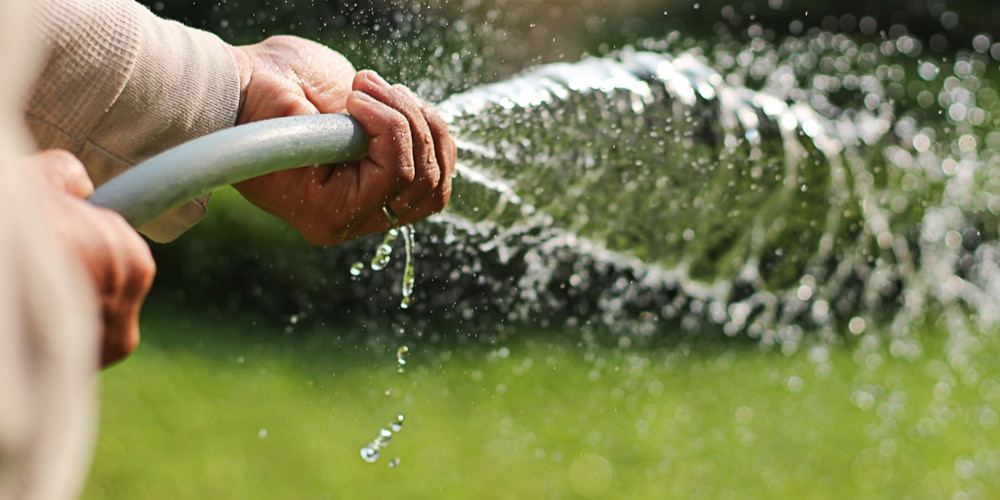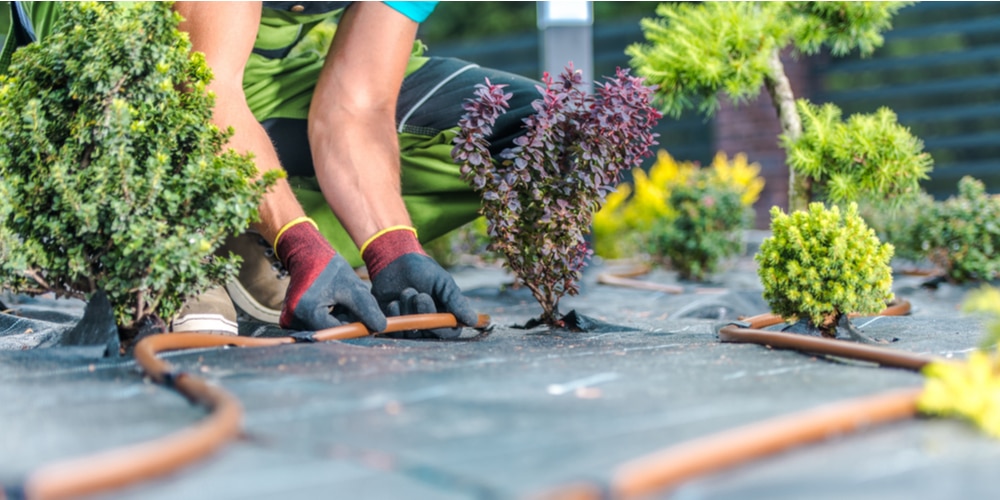If you’re looking for a way to water your garden or plants, you may be wondering what the difference is between drip irrigation vs soaker hose. Both of these methods have their pros and cons, and it can be tough to decide which one is right for you.
In this blog post, we will discuss the differences between drip irrigation and soaker hose and the benefits and drawbacks of each one. We hope this information will help you make an informed decision about which watering method is best for you!
Soaker Hose: Overview

A soaker hose is a type of garden hose that is designed to release water over a period of time slowly. Most soaker hoses are made from porous materials such as rubber or vinyl, which allows water to seep through the walls of the hose.
Soaker hoses are often used to water gardens or potted plants, as they can provide a slow and steady stream of water that helps prevent root damage.
Additionally, soaker hoses can be an efficient way to water large areas, as they help to distribute moisture throughout the soil evenly.
To use a soaker hose, simply attach it to a water source and place it in the desired location. Most soaker hoses have built-in timers that allow you to set how long the hose should run. Once the timer expires, the soaker hose will automatically shut off, preventing overwatering and saving you time and money.
Benefits Of Soaker Hose
Most gardeners know the importance of watering their plants but may not be familiar with the benefits of using a soaker hose. Here are some of the benefits that you may experience when using a soaker hose:
Efficient watering: Soaker hoses can help you save time and water by evenly distributing moisture throughout the soil.
Prevent root damage: By slowly releasing water, soaker hoses can help prevent root damage caused by overwatering.
Water large areas: Soaker hoses are ideal for watering large gardens or potted plants.
Convenient: Soaker hoses can be left in place for extended periods, making them a convenient option for busy gardeners.
Drawbacks Of Soaker Hose
While soaker hoses offer many benefits, there are also some drawbacks that you should be aware of. Some of the potential drawbacks of using a soaker hose include:
Possible leakage: Soaker hoses are made from porous materials, which may leak over time.
May attract animals: If there is a water source attached to your soaker hose, it may attract animals such as deer, rabbits, or raccoons.
Drip Irrigation: Overview
Drip irrigation is a type of irrigation system that slowly drips water onto the roots of plants. It is an efficient way to water crops, as the roots slowly absorb the water and less is lost to evaporation. Drip irrigation can be used on various crops, including vegetables, flowers, and trees. It is also an effective way to water gardens. There are many different types of drip irrigation systems available, and they can be customized to meet the needs of any garden or farm. Drip irrigation is an increasingly popular method of watering crops, as it conserves water and reduces the labor required.
Benefits Of Drip Irrigation
Drip irrigation offers several benefits for gardeners and farmers. Some of the benefits of using drip irrigation include:
Water conservation: Drip irrigation is an efficient way to water plants, as it minimizes evaporation and runoff.
Reduced labor: Drip irrigation systems can be automated, requiring less labor to operate.
Weed control: Drip irrigation can help reduce weeds’ growth by delivering water directly to the roots of plants.
Improved yields: Plants properly watered with drip irrigation systems often have higher yields than those not.
Drawbacks Of Drip Irrigation
While drip irrigation is a highly effective way to water plants, there are also some potential drawbacks that you should be aware of. Some of the potential drawbacks of using drip irrigation include:
Initial cost: Drip irrigation systems can be expensive to install, particularly if you have a large garden or farm.
Maintenance: Drip irrigation systems require regular maintenance and cleaning to prevent clogging and leaks.
Pests: Drip irrigation systems can attract pests such as rats and snakes, which may damage the system or contaminate the water.
Less effective: Drip irrigation can be less effective than other types of irrigation in areas with high winds or heavy rains.
Drip Irrigation vs Soaker Hose: Which System Is The Best For Your Garden?
When should drip irrigation be used?
Drip irrigation is often used in arid or drought-prone areas, where water conservation is essential. It can also be used in areas with sandy soil, as it helps prevent the sand from washing away. In general, drip irrigation should be used when precise watering is required. This might be the case when plants are particularly delicate or grown in containers. Drip irrigation should be automated whenever possible, as this will help ensure that plants receive the same amount of water daily.
When should soaker hoses be used?
Soaker hoses are often used in gardens or farms where the soil is not too sandy. They can be left in place for extended periods, making them a convenient option for busy gardeners. Soaker hoses are less expensive than drip irrigation systems and require less maintenance. In general, soaker hoses should be used when watering large areas or when watering plants that are not too delicate.
Drip Irrigation vs Soaker Hose: Final Thoughts
The best irrigation system for your garden will depend on several factors, including the size, the type of plants you are growing, and your budget. If you are looking for an efficient way to water your plants, drip irrigation may be the best option.
However, if you have a large garden or farm, you may want to consider a soaker hose. Whichever system you choose, do your research to ensure that it is the best option for your needs.
Related Article: The Best Way to Water Grass Without a Sprinkler System

